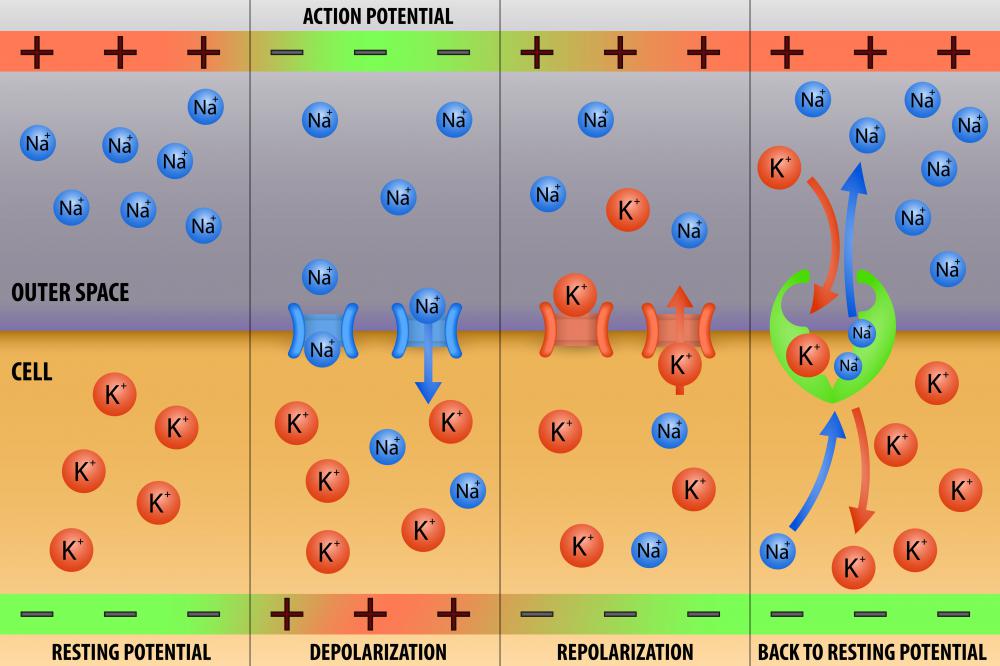At WiseGEEK, we're committed to delivering accurate, trustworthy information. Our expert-authored content is rigorously fact-checked and sourced from credible authorities. Discover how we uphold the highest standards in providing you with reliable knowledge.
What Is a Glycine Receptor?
Receptors are found along the membranes of neurons and are proteins to which specific neurotransmitters bind. When neurotransmitters bind to receptors, ion channels open and close, causing either an excitatory or inhibitory response within the neuron. A glycine receptor is an ionotropic or ligand-gated receptor that consists of many different proteins. It is a receptor for the inhibitory neurotransmitter glycine, and is extensively spread in the central nervous system.
An ionotropic receptor, such as a glycine receptor is one that joins the binding of neurotransmitters and the functioning of ion channels into one molecular component. This type of receptor usually has five different proteins that span along the cell membrane, all of which contribute to forming the pore or opening of an ion channel. When a neurotransmitter binds to a ligand-gated receptor, ion channels open eliciting a response. Responses from these receptors are usually quick and short in duration.

A glycine receptor binds to the inhibitory neurotransmitter glycine, which is synthesized from serine. Serine is created from a by-product or ‘intermediate’ produced during glycolysis, a process in which glucose is separated into two pyruvic acid molecules. Glycine is then produced from serine by an enzyme called serine transhydroxymethylase. The neurotransmitter glycine is an amino acid, making it a building block for proteins within the body.

When glycine is released, it activates a glycine receptor by binding to it, resulting in an inward flow of chloride ions into the neuron, causing hyperpolarization. A hyperpolarized neuron is one that has a negative electrical charge along its cell membrane, resulting in an inhibitory response. Glycine is termed an inhibitory amino acid because it produces inhibitory responses in neurons.
Glycine is involved in the retina, lower brainstem, and spinal cord where Renshaw cells are located. Renshaw cells are interneurons, which mean that they connect efferent, or transmitting, and afferent, or receiving, neurons in neuronal pathways. These cells are excited by collaterals of motor neurons; however, when glycine binds to receptors found in them, the motor neurons are inhibited. This is an example of recurrent inhibition.
The neurotransmitter glycine is found extensively in tissue proteins and all body fluids. While it is not an essential amino acid, it acts to metabolize bile salts and peptides. When genes that code for the transporters that remove glycine are damaged, it results in a condition called hyperglycinemia. This condition occurs when there is a high level of glycine in the central nervous system and includes symptoms such as fatigue and mental retardation.
AS FEATURED ON:
AS FEATURED ON:












Discuss this Article
Post your comments